.
It takes a special type of person to hold up a camera rather than duck for cover under fire. To become a war photographer requires a bit of sociopathy: the ability to stand aside in a traumatic scenario and do nothing but watch and shoot. Getting the photo has to be everything.
Depictions of war help constitute a major part of the public imagination. They offer insights into what makes a nation; they politicize us, force us to consider institutionalized violence, and inspire empathy. War photography is a public good. But it’s also propaganda. It is truth telling—sometimes—and shock therapy.
We typically think of photojournalism broadly as the last bastion of the Real. We think it objective in its depictions, and yet delight in its dramatics. War photography highlights this relationship: between audience-expectation, technology, and atrocity. Frank Hurley saw and documented actual combat, but sometimes used composites in order to create a greater spectacle. In “An episode after the Battle Zonnebeke,” Hurley overlaid tiny planes, flying low above the heads of solders on the ground, into the original scene. The late addition does add a certain urgency and drama. In some ways it’s stunning that the history of photography is also a history of technology and manipulation (of cropping, overlaying, contriving, colorizing, stretching, and thinning). But war photography is photography. It exists in the tension between journalism and art form—neither war nor photography, but the intersection of both.
“If I don’t make pictures like this, people like my mother will think that what they see in war is what they see in movies”
—Kenneth Jarecke
As photo-technology advanced beyond the Second World War, the horror of armed conflict amplified in imagery. It wasn’t an action adventure anymore with an optimistic talky voice to smooth over the rough edges. The Vietnam War was violence in full motion and color. One famed photograph, taken in 1966 by LIFE magazine’s Larry Burrows, depicts a wounded Marine Gunnery Sgt. Jeremiah Purdie reaching out for his injured comrade just outside the demilitarized zone. The injured soldier sinks into his environment, visibly exhausted and covered in mud. Purdie’s gauze head wrapping (surely covering a bleeding head wound) emanates bright red near the center.
The advent of color photography and its use in field journalism had the unintended consequence of adding a certain visual potency to representations of war. It changed the landscape of photography forever, allowing images to more closely mimic human gore—allowing the viewer to examine the human body like a car crash.
Kenneth Jarecke’s famed depiction of the Gulf War, titled “Incinerated Iraqi,” was not circulated in The United States due to the disturbing nature of the subject matter. (The title of the photograph is a plain descriptor of the content.) “If I don’t make pictures like this,” Jarecke said in an interview with the BBC, “people like my mother will think that what they see in war is what they see in movies”
The thing that I find truly disturbing about war photography is not the repeated portrayal of horrors. These photographs are famous. They are not new. I have seen them several times over—me and everyone else. What I find most disturbing is the blatant emotional consumption of images: the way they are read and propagated. Perhaps what I’m sensing is merely the photographic element: the inherent conflict of interests alongside the manipulative structures of imagery. War photography is propaganda. It’s revealing. It’s disturbing and disheartening. As a genre, war photographs are all of these things at once.
 AFGHANISTAN. Kunduz Province. October 2009. A German soldier burns a flare at a temporary campsite. © Moises Saman/Magnum Photos
AFGHANISTAN. Kunduz Province. October 2009. A German soldier burns a flare at a temporary campsite. © Moises Saman/Magnum Photos
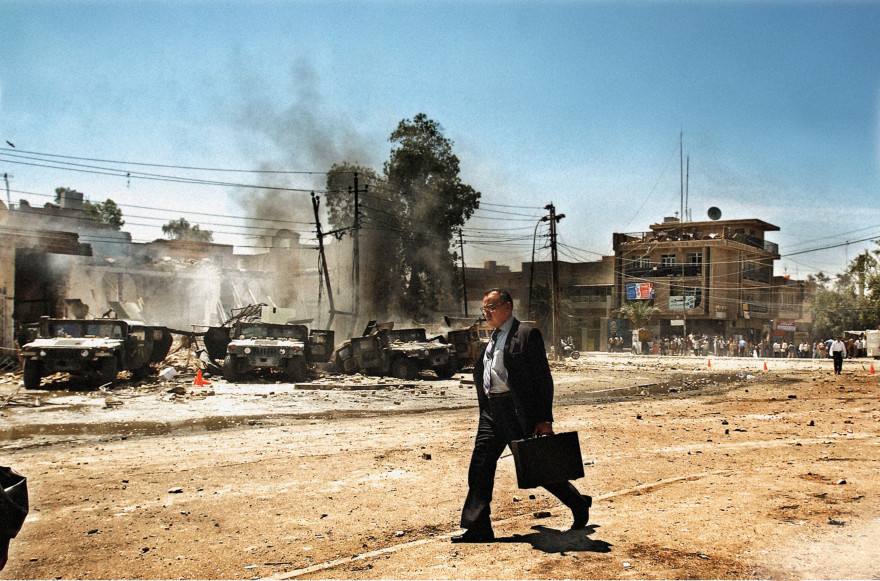 IRAQ. Baghdad, Iraq. Monday, April 26, 2004. An Iraqi man walks by the scene of an attack on US Army Humvee’s in the Al-Waziriyah neighborhood of Baghdad. © Moises Saman/Magnum Photos
IRAQ. Baghdad, Iraq. Monday, April 26, 2004. An Iraqi man walks by the scene of an attack on US Army Humvee’s in the Al-Waziriyah neighborhood of Baghdad. © Moises Saman/Magnum Photos
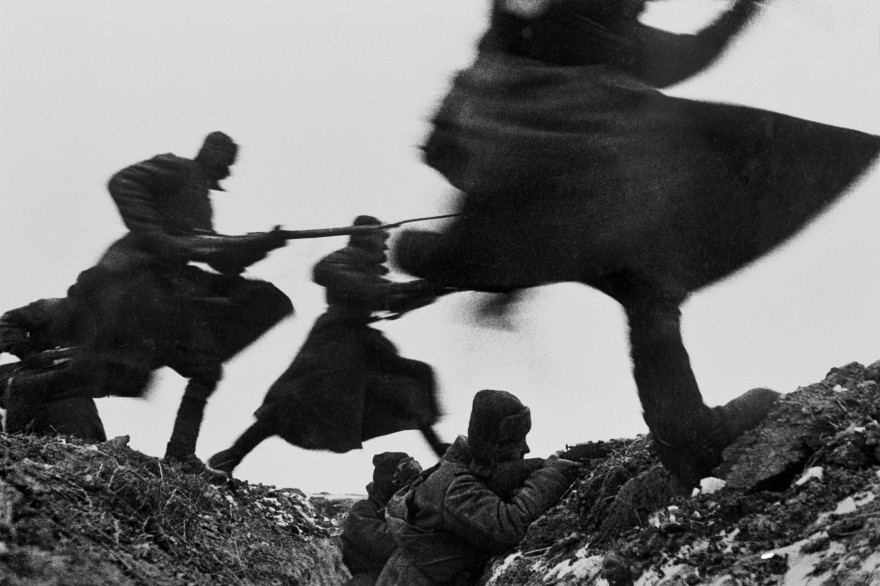 USSR. 1941. Soviet troops trench fighting during an attack. Photo by Dmitri Baltermants. © Soviet Group/Magnum Photos
USSR. 1941. Soviet troops trench fighting during an attack. Photo by Dmitri Baltermants. © Soviet Group/Magnum Photos
 USSR. 1942. Tanks firing at night during the battle of Stalingrad. Photo by Dmitri Baltermants. © Soviet Group/Magnum Photos
USSR. 1942. Tanks firing at night during the battle of Stalingrad. Photo by Dmitri Baltermants. © Soviet Group/Magnum Photos
 LEBANON. Beirut, Soldier jumping from a mound near the sea front. 1982. © Chris Steele-Perkins/Magnum Photos
LEBANON. Beirut, Soldier jumping from a mound near the sea front. 1982. © Chris Steele-Perkins/Magnum Photos
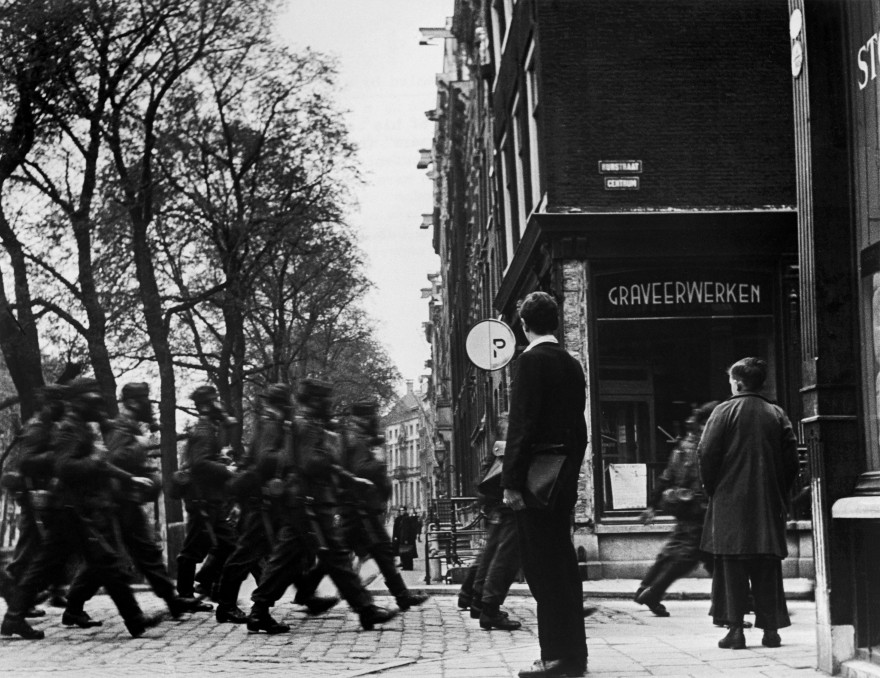 HOLLAND. Amsterdam. World War II. German soldiers. 1945. © Kryn Taconis/Magnum Photos
HOLLAND. Amsterdam. World War II. German soldiers. 1945. © Kryn Taconis/Magnum Photos
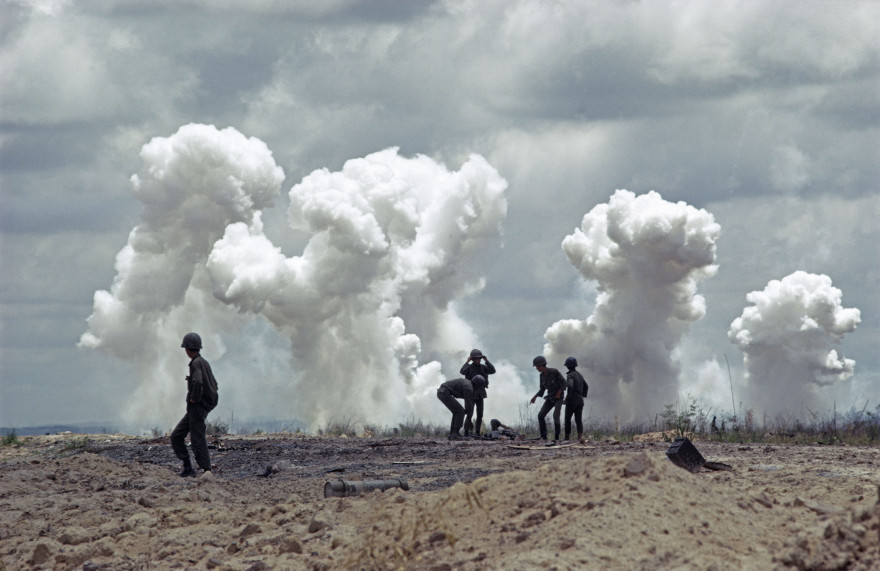 SOUTH VIETNAM. US bombardment after the battle of An Loc. 1972. © Bruno Barbey/Magnum Photos
SOUTH VIETNAM. US bombardment after the battle of An Loc. 1972. © Bruno Barbey/Magnum Photos
 FRANCE. Normandy. June 6th, 1944. US troops assault Omaha Beach during the D-Day landings (first assault). © Robert Capa © International Center of Photography/Magnum Photos
FRANCE. Normandy. June 6th, 1944. US troops assault Omaha Beach during the D-Day landings (first assault). © Robert Capa © International Center of Photography/Magnum Photos
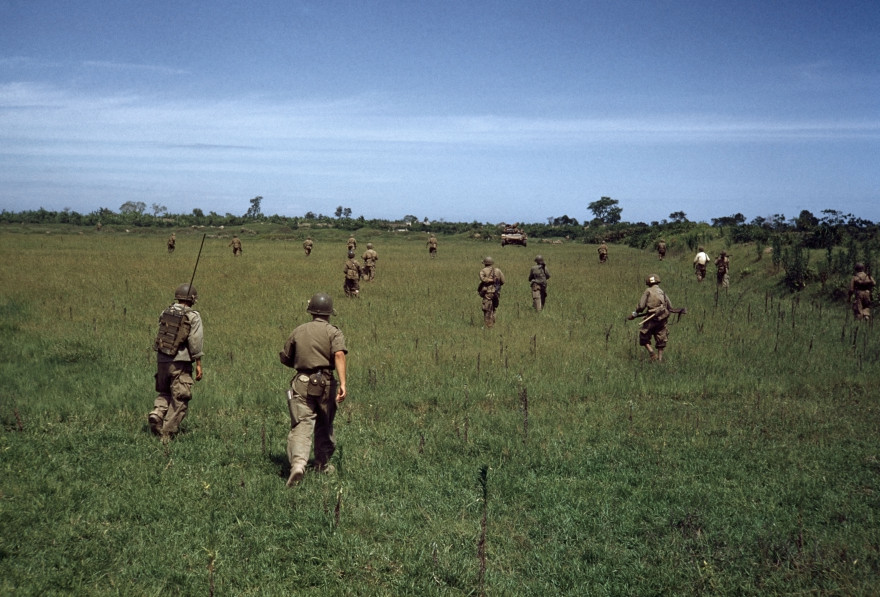 INDOCHINA. May 25, 1954. Vietnamese troops advancing between Namdinh and Thaibinh: one of the last pictures taken by Robert Capa before he stepped on a landmine and died at 14.55. © Robert Capa © International Center of Photography/Magnum Photos
INDOCHINA. May 25, 1954. Vietnamese troops advancing between Namdinh and Thaibinh: one of the last pictures taken by Robert Capa before he stepped on a landmine and died at 14.55. © Robert Capa © International Center of Photography/Magnum Photos
 ISRAEL. 1991. Tel Aviv during Gulf War. © Micha Bar Am/Magnum Photos
ISRAEL. 1991. Tel Aviv during Gulf War. © Micha Bar Am/Magnum Photos
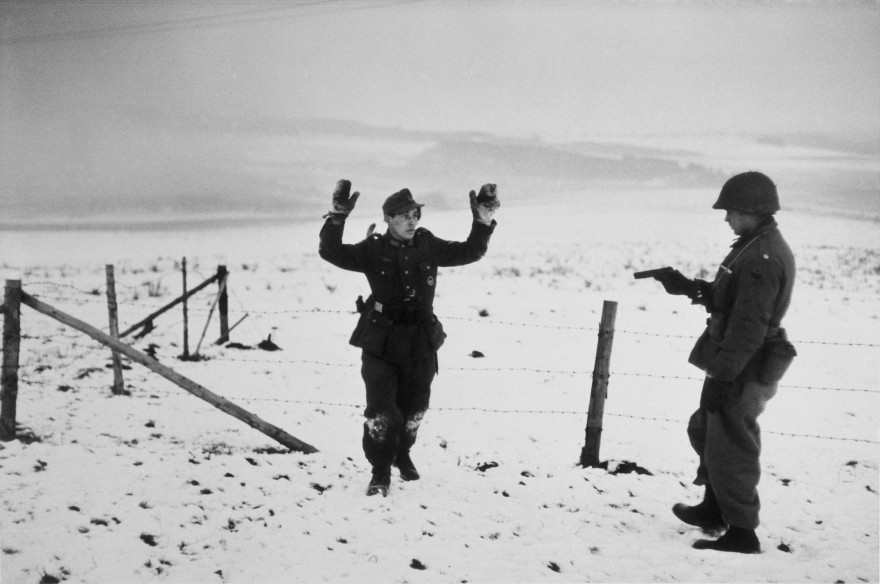 BELGIUM. Near Bastogne. December 23rd-26th, 1944. A US soldier with a German prisoner of war during the Battle of the Bulge. © Robert Capa © International Center of Photography/Magnum Photos
BELGIUM. Near Bastogne. December 23rd-26th, 1944. A US soldier with a German prisoner of war during the Battle of the Bulge. © Robert Capa © International Center of Photography/Magnum Photos
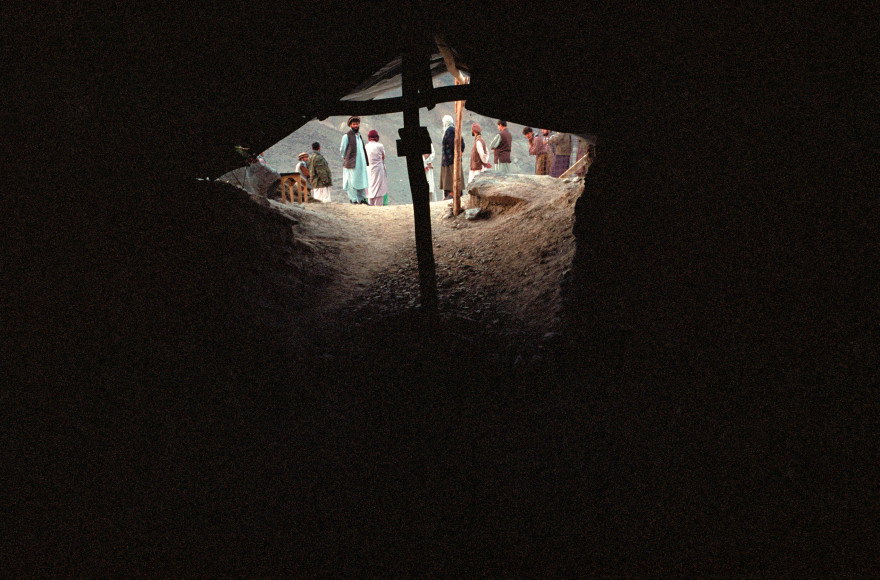 AFGHANISTAN. September 26th, 2001. Northern Alliance Soldiers and Civilians standing on “Hill of the Biggest of Marthyrs” near the village of Bazarak. September 2001. © Thomas Dworzak/Magnum Photos
AFGHANISTAN. September 26th, 2001. Northern Alliance Soldiers and Civilians standing on “Hill of the Biggest of Marthyrs” near the village of Bazarak. September 2001. © Thomas Dworzak/Magnum Photos
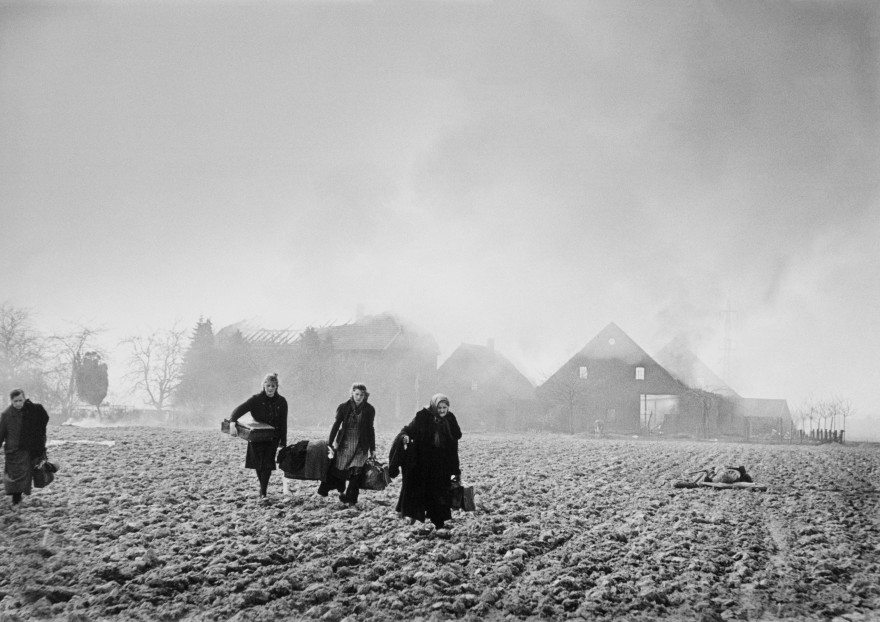 GERMANY. Near Wesel. March 24th, 1945. German farmers fleeing. © Robert Capa © International Center of Photography/Magnum Photos
GERMANY. Near Wesel. March 24th, 1945. German farmers fleeing. © Robert Capa © International Center of Photography/Magnum Photos